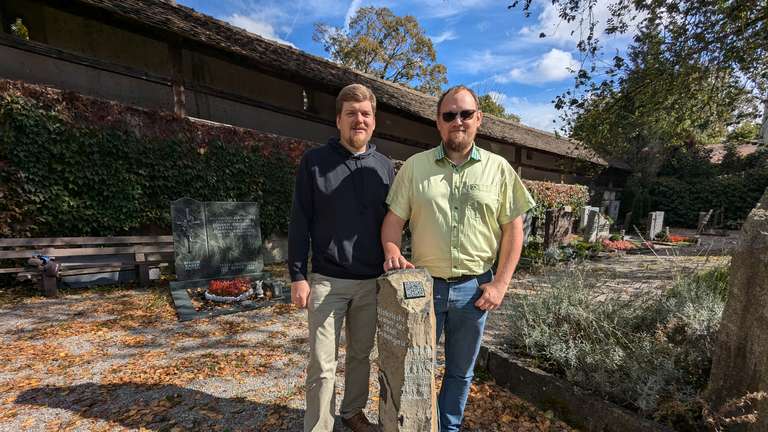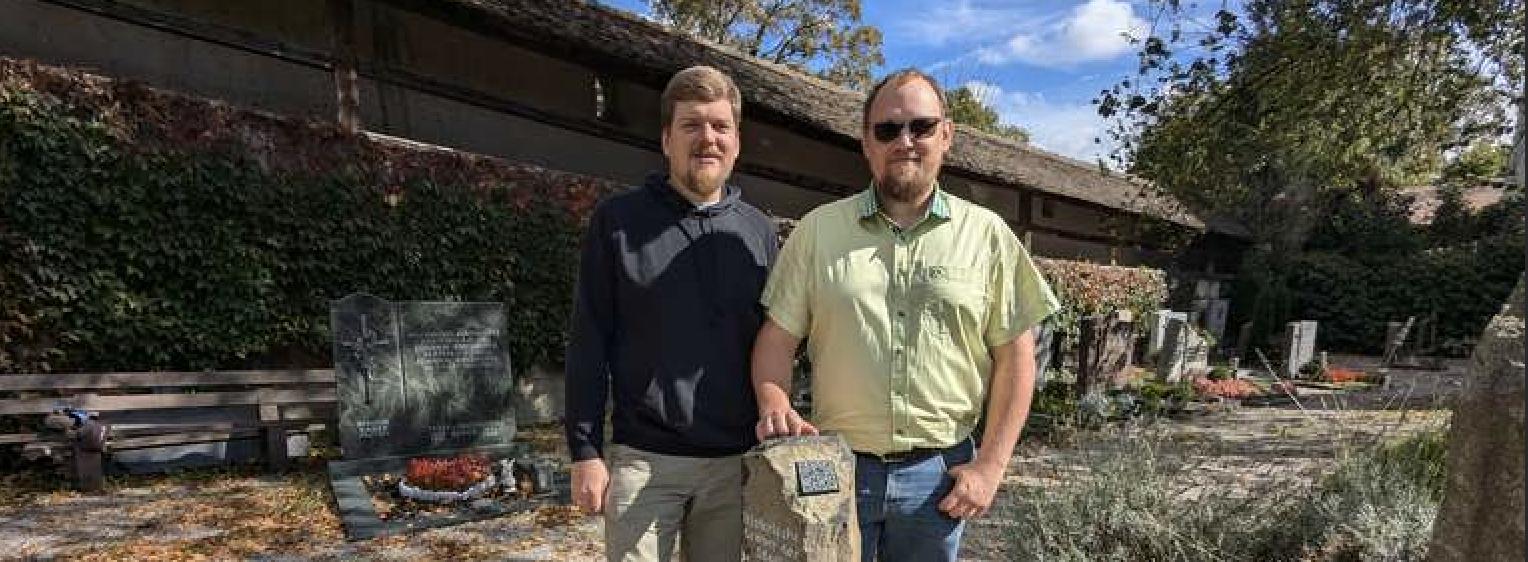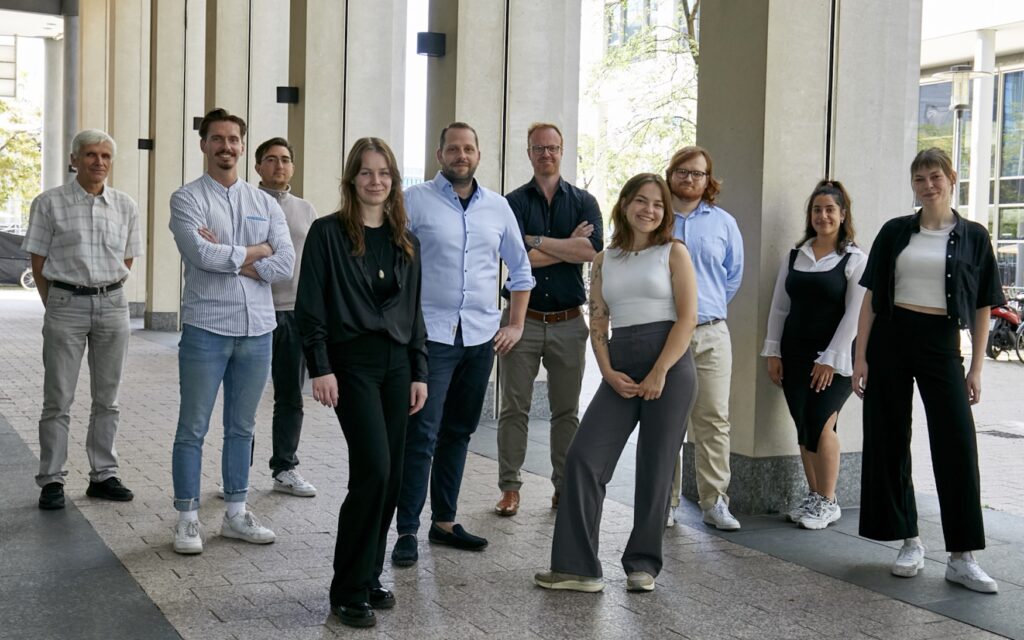The city cemetery is now equipped with a QR code stele. Visitors can call up information on the deceased and graves worthy of preservation and create their own memorial pages.

Schongau – The funeral culture is undergoing major changes. The town of Schongau is also addressing this issue. While cemeteries in large cities such as Munich have long since become a place of peace and retreat for citizens, Schongau is now also beginning to think about this. “One could discover and understand the cemetery as a living space,” says Jürgen Erhard, location promoter and district home keeper.
And the culture of remembrance can also move with the times. Erhard and Daniel Felsmann, head of the registry office and cemetery administration, explained the small steps that have already been taken in the town and forest cemeteries.
Gradually, the newest part of the city cemetery, located to the east of the city wall and historic bus garage, is to become a field for historically important gravestones. The first four gravestones, which the town would like to preserve in perpetuity, have now been placed where the newly restored sandstone memorial stone for Schongau’s dramatically perished foreign workers has already found its place: the gravestones of the Holzhey, Handl, Huber and Riedl families have found a new location.
If the gravestone is a valuable work or belongs to a person of importance to Schongau, the relatives or the owner of the grave will be consulted when the grave is vacated. “People have been buried here since the 16th century. The forms change, but you should see what has shaped the cemetery in different times,” says Erhard.
Gravesites that structure the cemetery or marble slabs in the walls remain in place. And the gravestones that are worth preserving will only gradually be moved to their new location. “You have to be careful, it’s a long process and we don’t want too many gaps to open up in the cemetery,” says Erhard. “But the relatives react positively,” says Felsmann. “Who doesn’t like to hear that someone was important to the town or at least that the stone is beautiful?” There are already several graves of honor scattered around the cemetery, such as that of choirmaster Heinrich Huber, which was saved by former district curator Helmut Schmidbauer when it was due to be closed down.
Information about special gravesites
You can now also find out about the special gravesites. A stele has been erected on site, via which a QR code can be called up. This leads directly to the memorial page of the city cemetery, managed by the city in cooperation with the company “Grappt” from Burgheim.
It is Felsmann’s wish to gradually build up a comprehensive database of the deceased, as he sees this as a way of coping with grief. In addition to a photo of the grave and the personal details of the deceased, relatives can customize the page “for a really reasonable fee” (Felsmann), with a book of condolences or a picture gallery. “Behind this is the need to share something about the loved ones,” says Erhard.
GPS data of the graves helps
Incidentally, you don’t even have to be part of the family to make entries. On the contrary, the city is happy to receive help so that the history of the citizens of Schongau is not lost. Before the information is published, however, it goes through Daniel Felsmann, who has to approve the entry. Data on 52 people was entered for the town cemetery at the end of last week. This option is also already available for the forest cemetery.
Another function can be called up via the QR code: the GPS data of the graves. If you don’t know exactly where the grave of your great-grandmother or an old school friend is located, you can easily search using the maps of the two cemeteries: The search “schongau.friedhofsplan.de” takes you to the respective cemetery map and you can immediately display the grave location on your smartphone by entering the name of the deceased.
A burial calendar has also been created. The costs for the city including the QR code stele: around 2000 euros. Setting up the cemetery plan, including the online burial calendar (for the morticians) and the public burial calendar, cost 8500 euros.
Source: merkur.de, Elke Robert, 02.10.2024





